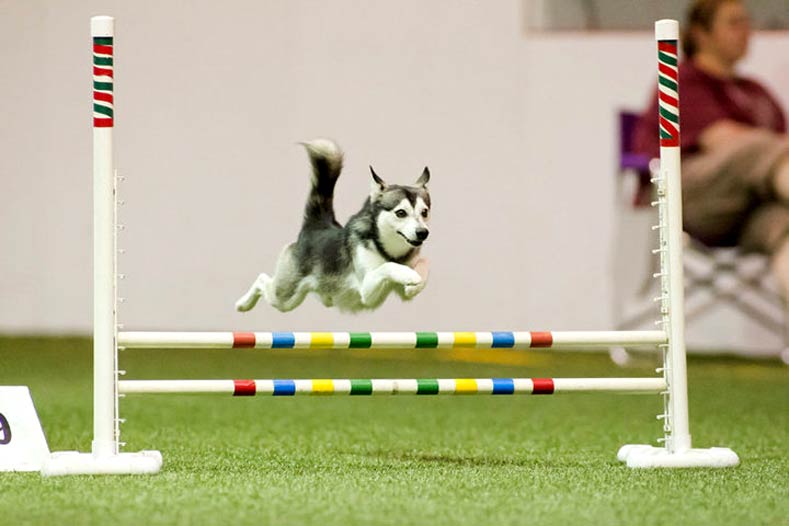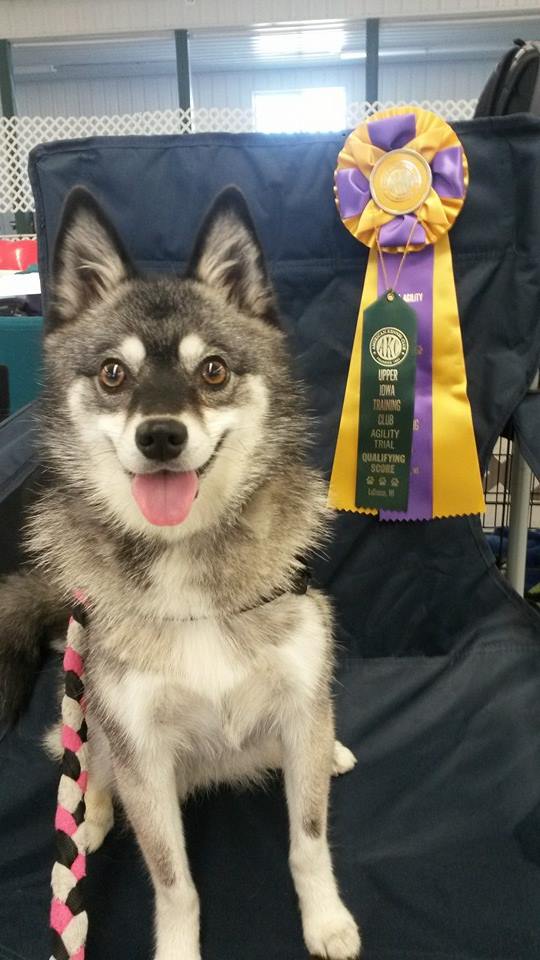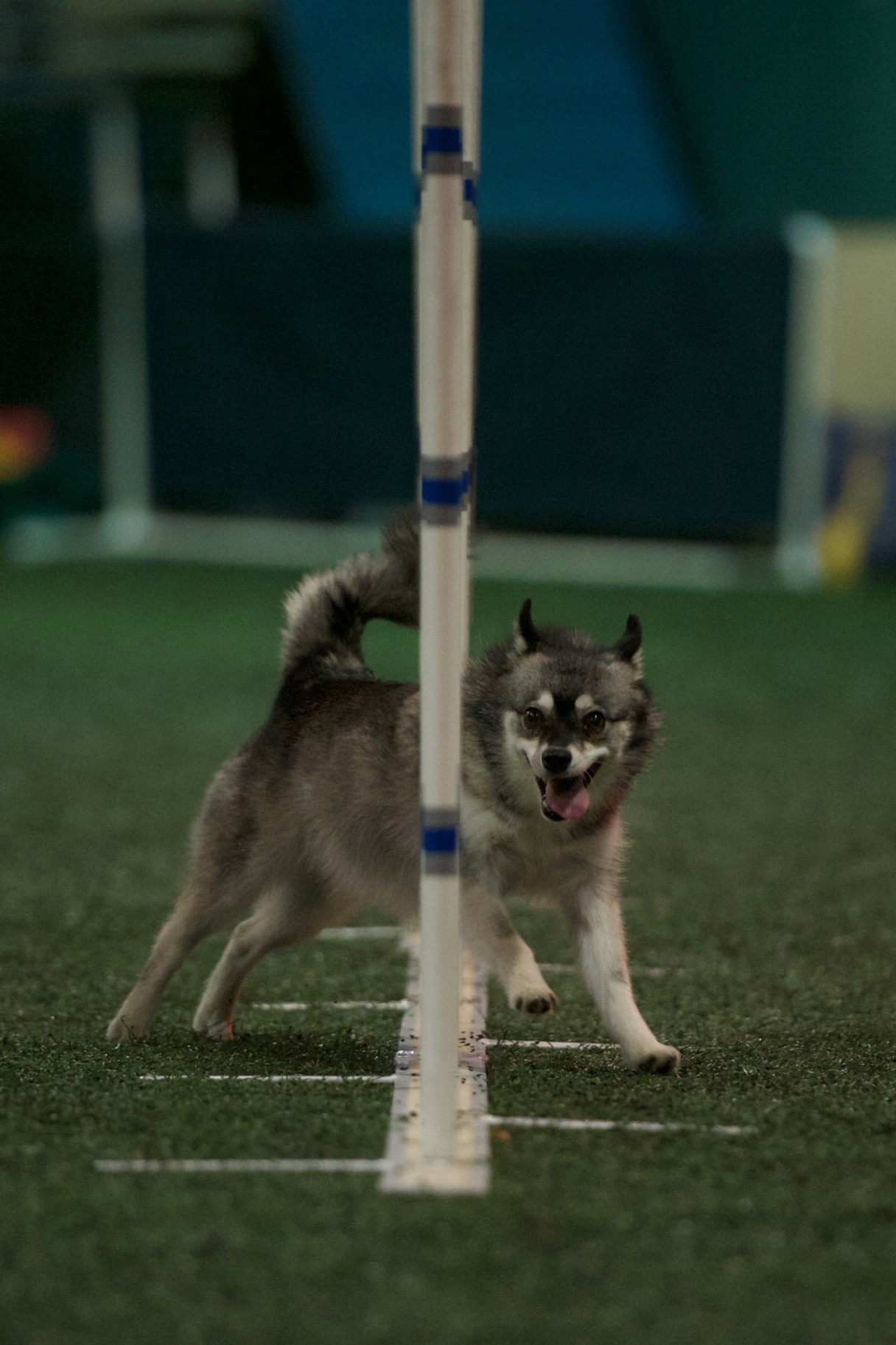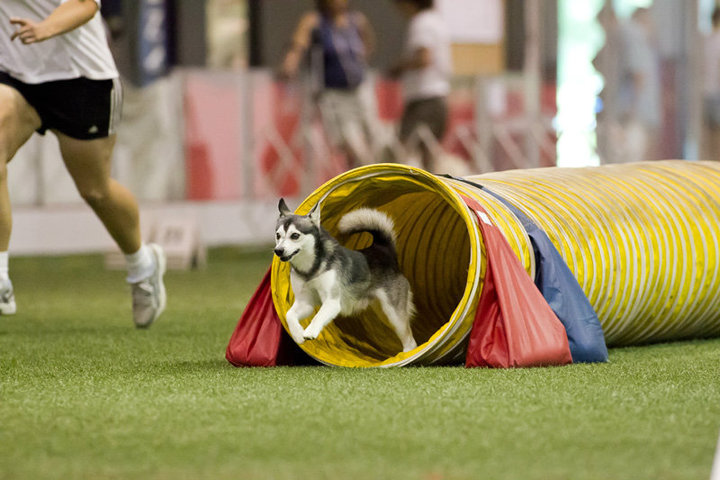
As a dog trainer, Karissa Solberg had worked with many different breeds and mixes. But she had never seen anything quite like the little dog that walked into her basic obedience class one night in 2008. The cute prick-eared canine looked like a miniature husky.
“I was enthralled with the dog, and her owner was kind enough to entertain my barrage of questions each week,” Solberg said.
The dog was an Alaskan Klee Kai, a breed developed as a miniature version of the Alaskan Husky, a popular working and racing breed in Alaska. Klee Kai is an Eskimo term for ‘little dog.”
Karissa had just started competing in agility with her Lab mix and also was showing horses so getting another dog was not in her plans.
“But I felt completely drawn to the breed and could not stop thinking about them and looking them up on the internet,” the Wisconsin resident said. Four months after meeting her first Klee Kai, she was flying to Colorado to pick up a puppy.
Today, Solberg owns two Klee Kai named Kaiser and Kizzy and is a devoted breed supporter, who works at educating the public about the unique dogs.
The Alaskan Klee-Kai is not an AKC recognized breed, but spayed and neutered dogs can be enrolled in the AKC Canine Partners program for all dogs and compete in AKC Companion Events.
Karissa and Kizzy are Canine Partners members and successfully compete in AKC Agility, having earned multiple titles.

“They are brilliant little dogs and they pick up training very quickly,” she said. But Solberg also cautioned that they are not for everyone.
She explained that many are one-family dogs and do not care for the attention of strangers, which is difficult since their adorable appearance draws the public.
“If you are looking for a social dog who loves people, this is not the dog for you. While many breeders have been working hard to improve temperament over the years, most Alaskan Klee Kai are very reserved with people they do not know,” she said.
“Kaiser grew up coming to work with me and traveling to trials on the weekend, and it took him years to be comfortable around people. He still has no desire for people to pet him, but he has relaxed in public because I removed the pressure – I don’t let people touch him because he does not enjoy it, but he will happily take a treat from anyone. Kaiser’s temperament is typical of the breed, but we are starting to see more social and friendly dogs from some breeders. My other Klee Kai, Kizzy, adores all people. She is so exceptionally friendly that I take her on therapy dog visits to the local nursing home and she loves the experience.”

Temperament
Living with Klee Kai is highly entertaining, but also takes a bit of adjustment. These are dogs that can never be trusted off leash, so having a securely fenced yard is very important (or you can commit to taking them out on leash).
Klee Kai tend to be quite vocal so some people experience issues in apartments. They don’t really bark, but they do “woo-woo” when they are happy and they scream when they are not. How affectionate they are with their people depends on the dog.
“Kaiser only cuddles in the morning, in bed. He has no time for such things otherwise. Kizzy is the opposite and will lie on my lap for hours on end. She insists that she have her belly rubbed pretty much 24/7.”
They are playful little dogs who go, go, go all of the time. Their exercise needs are moderate to high; like huskies, they love to run. “My Klee Kai love to play with each other and get along well with pretty much any dog they meet.”

Kaiser
History
The Alaskan Klee Kai was developed in Alaska by Linda Spurlin and her family to be a companion-sized version of the Alaskan Husky. From the early ‘70s through 1988, the Spurlins carefully selected dogs who met their high standards for appearance and soundness. In 1988, they made the Alaskan Klee Kai available to others. Spurlin originally called her new breed the “Klee Kai,” but in 1995 it was changed to Alaskan Klee Kai.
Size
There are three sizes of Klee Kai:
- Toy Variety: Up to and including 13 inches.
- Miniature Variety: Over 13 inches and up to and including 15 inches.
- Standard Variety: Over 15 inches up to and including 17 inches.
Health
There are few health concerns with the breed. A bleeding disorder called Factor VII has all but been eradicated through thoughtful breeding practices. There have been a handful of reports of congenital heart defects and liver shunts. As with many small breed dogs, luxating patella issues are possible.
Coat
Klee Kai have a double coat that can come in any color other than being all white. They should have a distinct facial mask. While Klee Kai do shed continuously, Solberg said their grooming needs are fairly minimal. “My dogs are bathed very infrequently because they don’t need it. They tend to blow their coat twice a year, during which time you wonder how such a small dog could produce so much hair and if it will ever stop.”
Want to get involved with AKC sports and events but your dog is a mixed breed? No problem! Here at the AKC, we welcome all types of dogs – purebred and mixed breeds alike. Enroll today.

